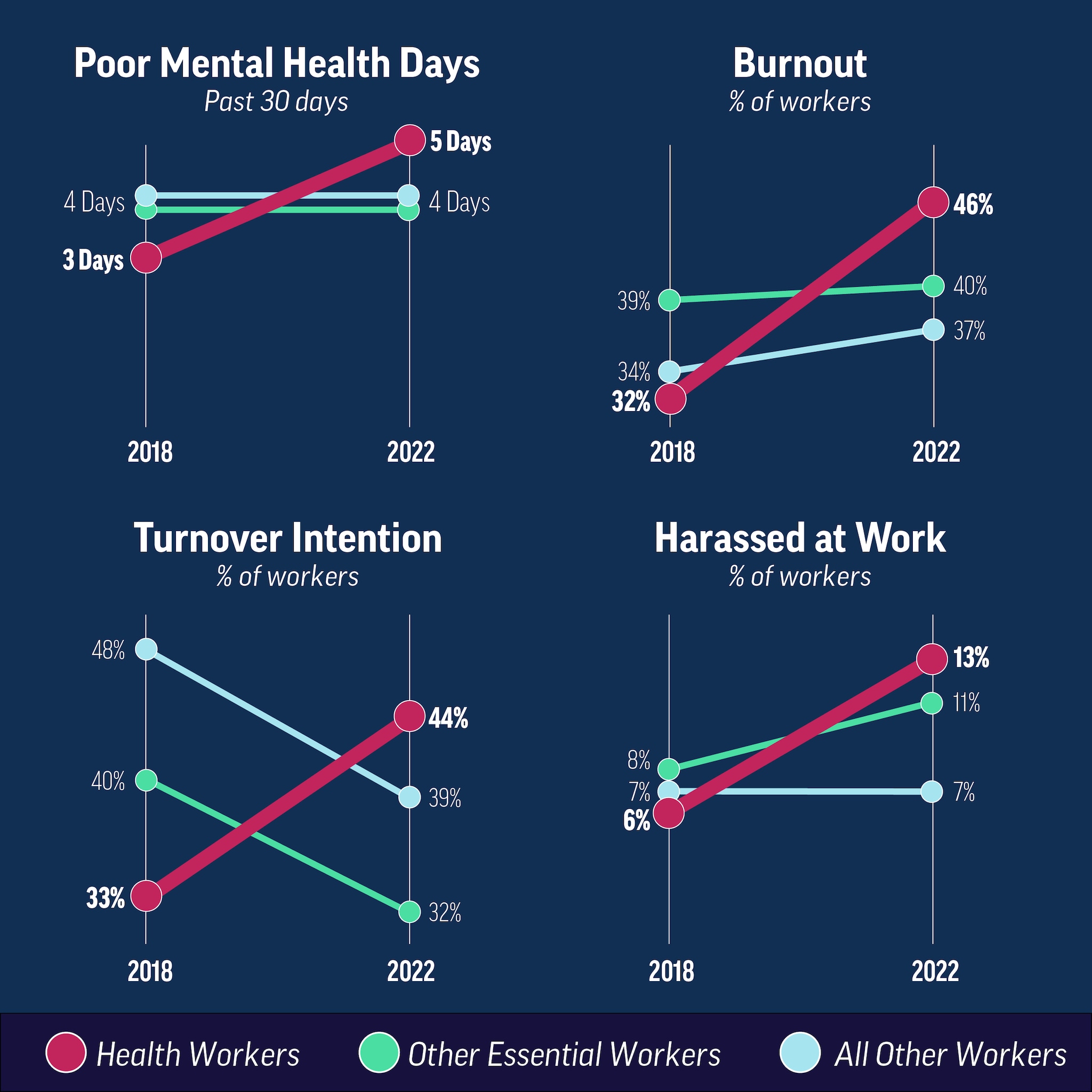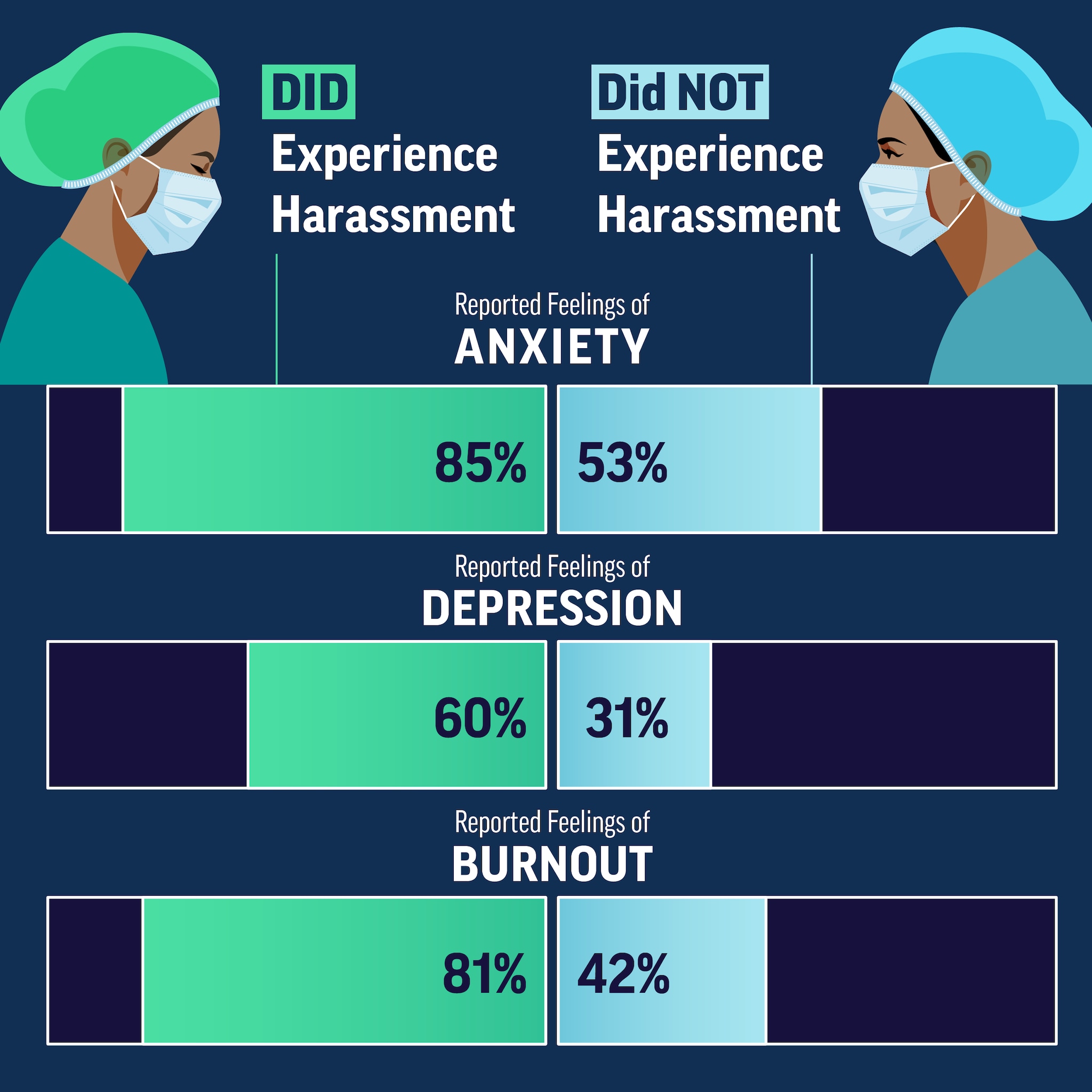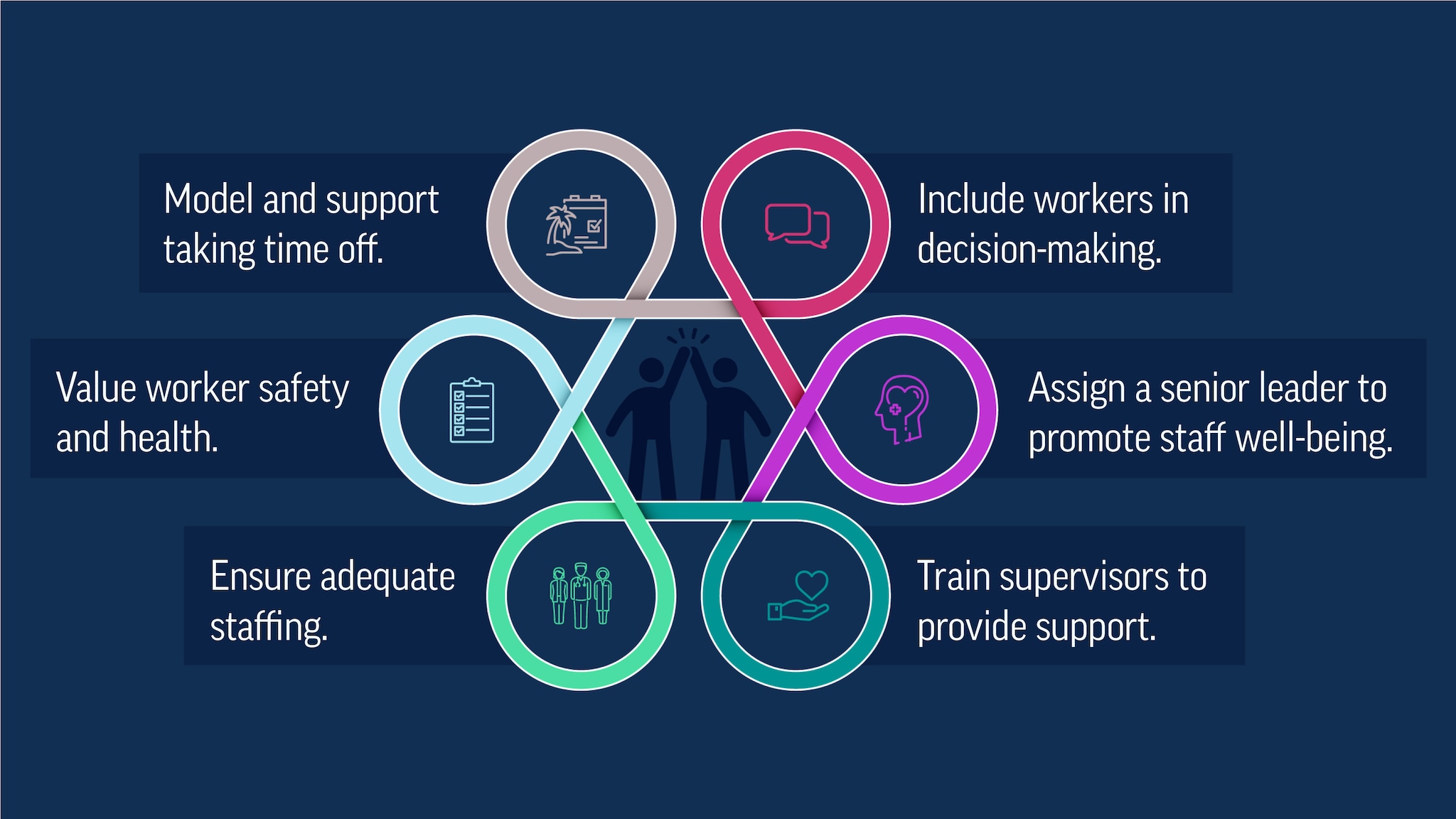Health workers were more likely than workers in other sectors to report poor working conditions during the COVID-19 pandemic. Specific aspects of health work added to this disparity. The study showed how symptoms of poor mental health and negative workplace conditions increased among health workers from 2018 to 2022 compared to other worker groups:
- Burnout: In 2022, 46% of health workers reported feeling burned out often or very often compared to 32% in 2018. The percentage of other essential workers and all other workers reporting burnout was similar in the two years.
- Harassment: The percentage of health workers who reported experiencing harassment more than doubled, going from 6% in 2018 to 13% in 2022. Other essential workers also reported an increase, from 8% in 2018 to 11% in 2022.
- Trust in management: In 2022, 78% of health workers agreed or strongly agreed that they trusted management, compared to 84% in 2018. Other essential workers reported a smaller drop in trust in management—down to 77% in 2022 from 81% in 2018.
- Workplace productivity: In 2022, 82% of health workers reported that their workplace conditions supported productivity, down from 91% in 2018. Other essential workers reported a smaller decrease–down to 77% in 2022 from 84% in 2018.
- Turnover intention: In 2022, the percentage of health workers who intended to look for a new job increased to 44%, up from 33% in 2018. The percentage of other essential workers and all other workers who intended to look for a new job decreased.
Health Workers Had Worse Outcomes in 2022 Compared to 2018
Health workers reported higher levels of poor mental health days, burnout, intent to change jobs (turnover intention) and being harassed at work in 2022 compared to 2018.
Employers Can Take Steps to Address These Problems Now
Improving workplace policies and practices may also improve worker well-being. Here are 6 tips to get started.
How health workers viewed their workplace had a big impact on their stress from the COVID-19 pandemic. When they reported trusting their management, health workers had fewer symptoms of burnout. This shows that positive, supportive workplaces may act as a buffer and lessen the mental distress health workers experience.
Health workers’ mental health, under unprecedented strain from the pandemic, demands immediate attention and decisive action. The Vital Signs study is a wake-up call to the pressing need to support the mental health of health workers. By understanding which working conditions harm mental health, employers can address these work-related factors and promote worker well-being.
Employers can:
- Improve workplace conditions that foster trust in management and prevent health worker burnout. Working conditions to focus on include:
- Supporting adequate staff levels,
- Providing helpful supervision, and
- Preventing harassment of employees.
- Encourage worker participation and two-way communication in decision-making.
- Reduce stigma related to seeking help by eliminating intrusive questions for credentialing.
- Provide and encourage use of paid leave for illness, family needs, and rest.
Supervisors and workers can:
- Talk together about how to improve workplace conditions.
- Use this study to show the importance of improving these working conditions in health occupations.
- Discuss the benefits of better workplaces for everyone’s health and well-being.
Everyone can:
- Support health workers by expressing appreciation for their essential work.
- Treat them with understanding and respect as they care for us and our families.
Get email updates about Vital Signs
VITAL SIGNS RESOURCES







